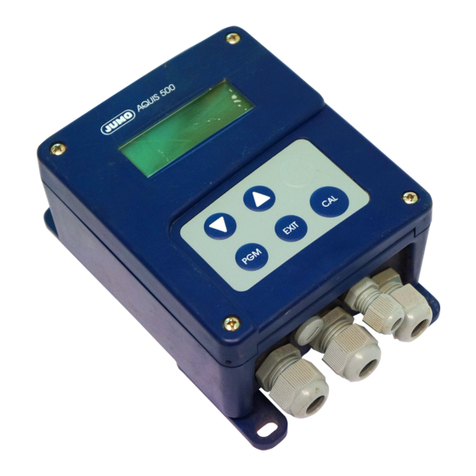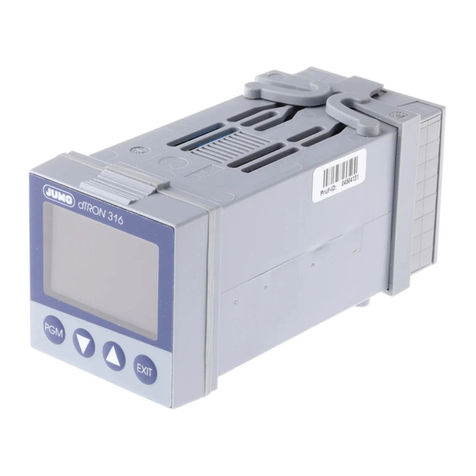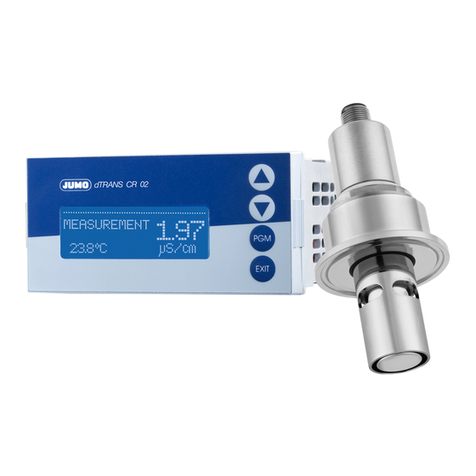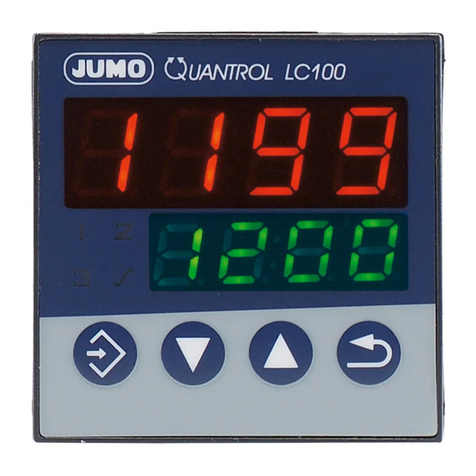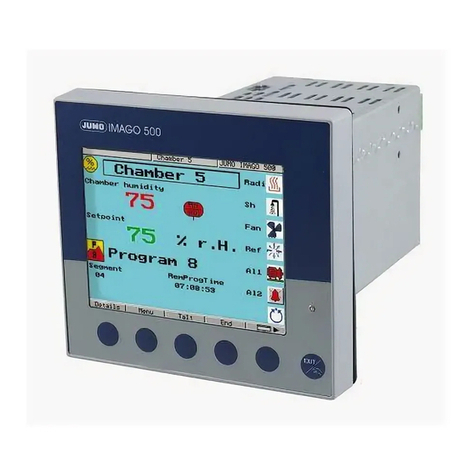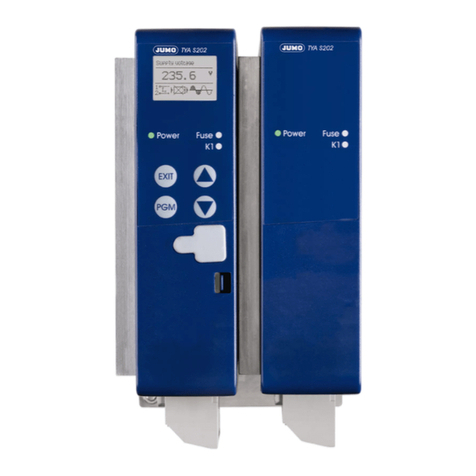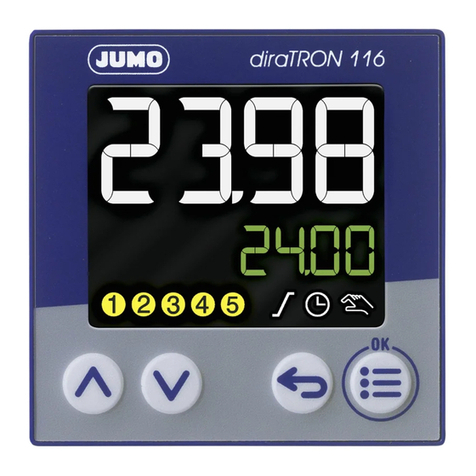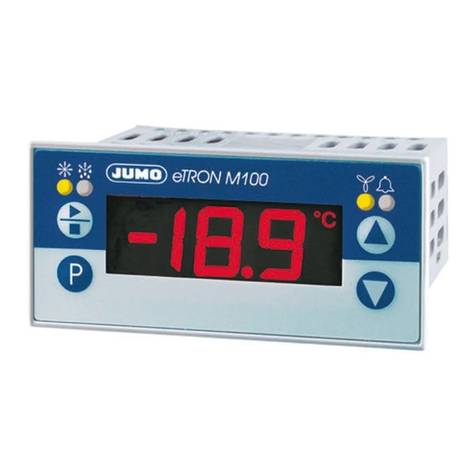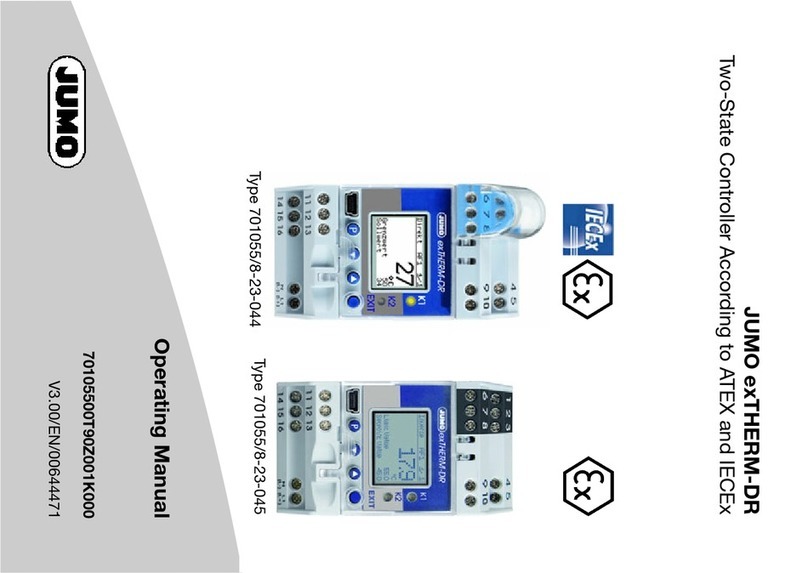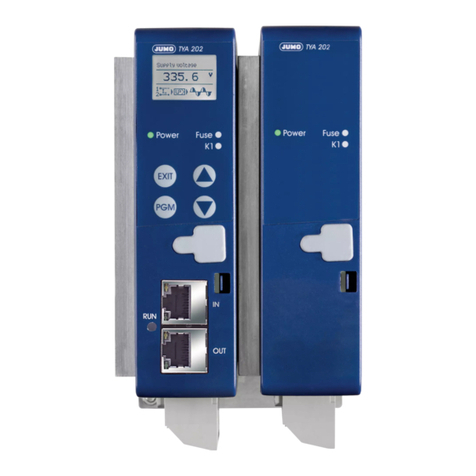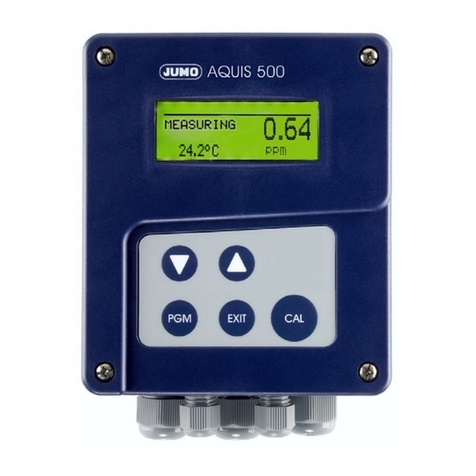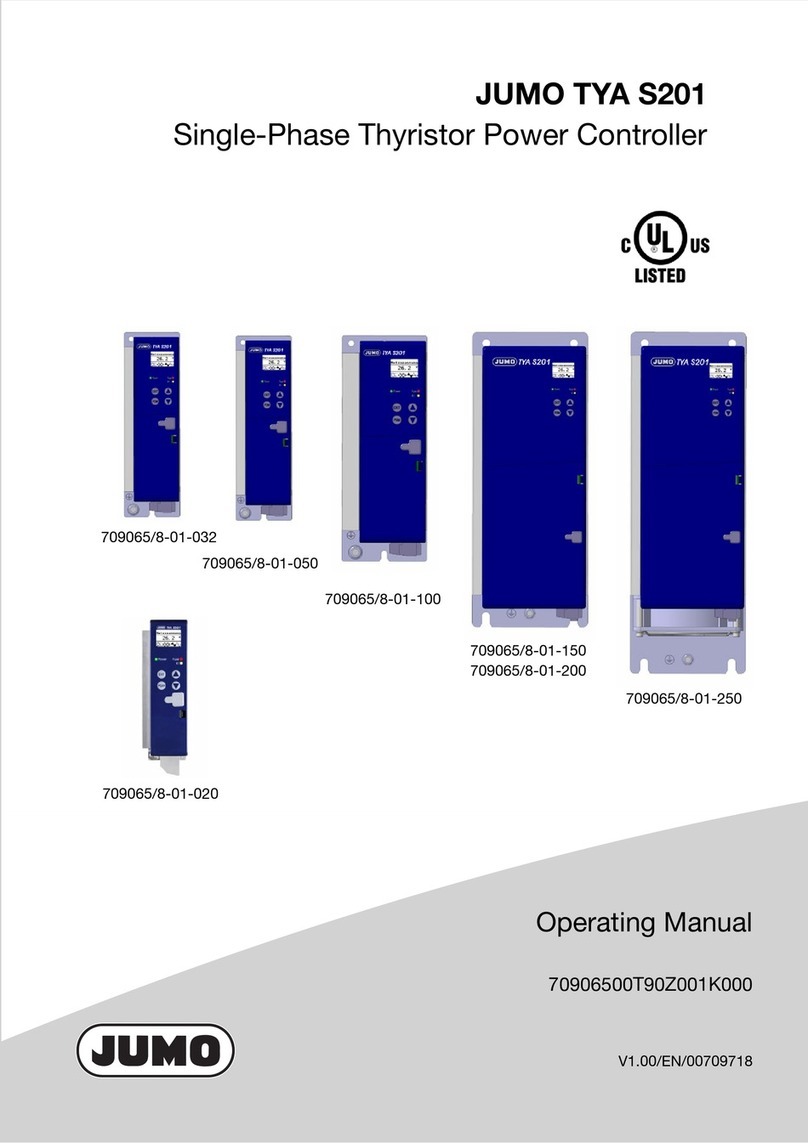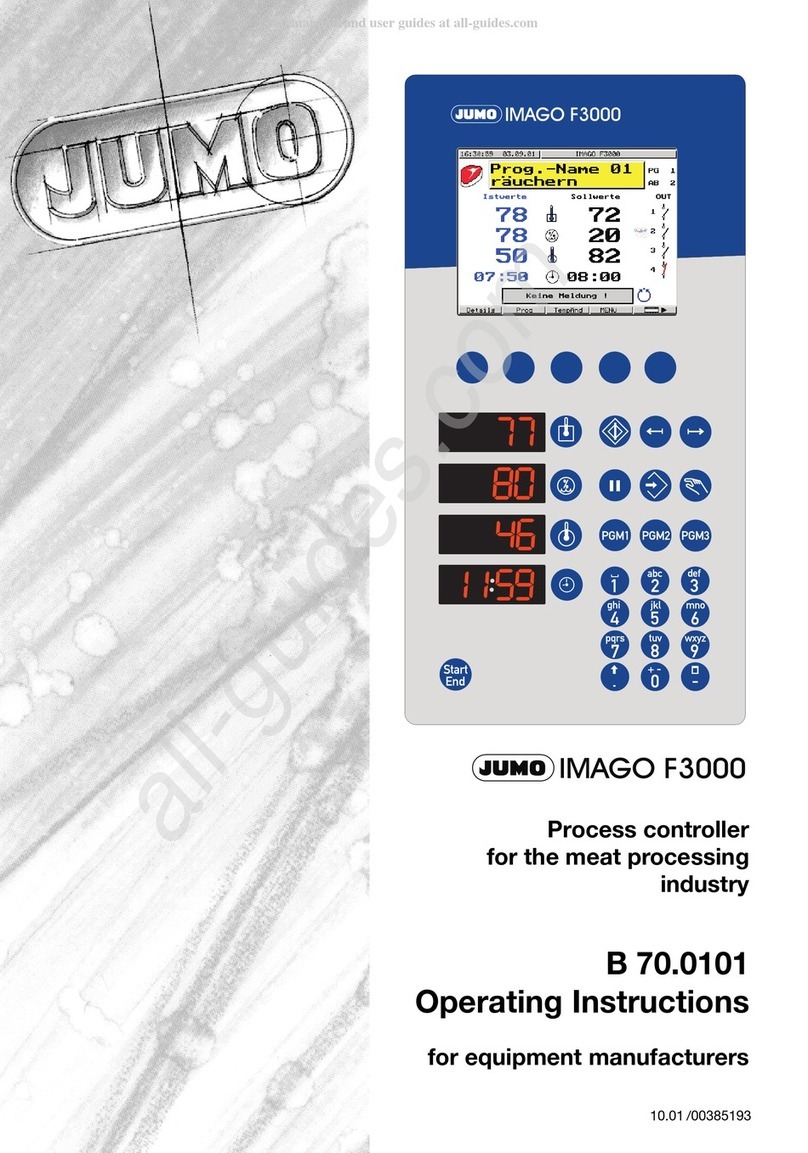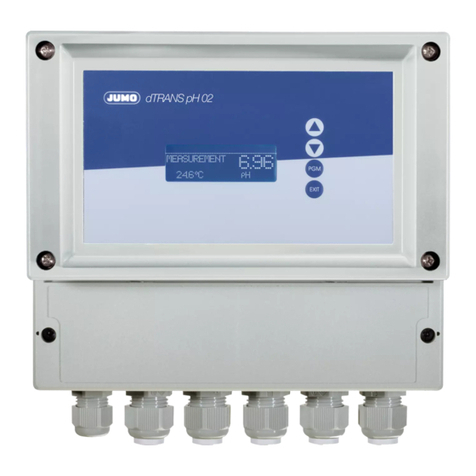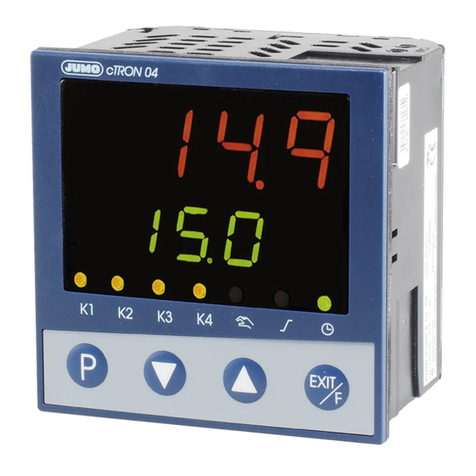
2 Protocol description
8
2.3 Device address
The device address of the slave can be set between 0 and 254. Address 0 is
reserved.
Two forms of data exchange can be distinguished:
Query Data request/instruction by the master to a slave, via the corresponding
device address.
The slave addressed responds.
Broadcast Instruction by the master to all slaves, via the device address 0. The
connected slaves do not respond. A specific setpoint can, for example, be
transmitted to all slaves. In such a case, the correct acceptance of the values
by the slaves should be checked by a subsequent readout of the setpoint.
A data request with device address 0 is not meaningful.
2.4 Timing of the communication
Start and end of a data block are marked by transmission pauses. The
maximum permitted interval between two consecutive characters is three
times the transmission time of a single character.
The character transmission time (the time taken to transmit one character)
depends on the baud rate and the data format that is used (stop bits and
parity bit).
For a data format with 8 data bits, no parity bit and one stop bit, this is:
character transmission time [msec] = 1000 * 9 bits/(baud rate)
For the other data formats it is:
character transmission time [msec]
= 1000 * (8 bits+parity bit+stop bit(s)) bits/(baud rate)
Sequence
HA maximum of 31 slaves can be addressed via the RS422/485
interface.
Data request from master
transmission time = n characters * 1000 * x bits/(baud rate)
Marker for end of data request
3 characters * 1000 * x bits/(baud rate)
Processing of the data request by the slave (max. 250msec)
Response of slave
transmission time = n characters * 1000 * x bits/(baud rate)
Marker for end of response
3 characters * 1000 * x bits/(baud rate)
